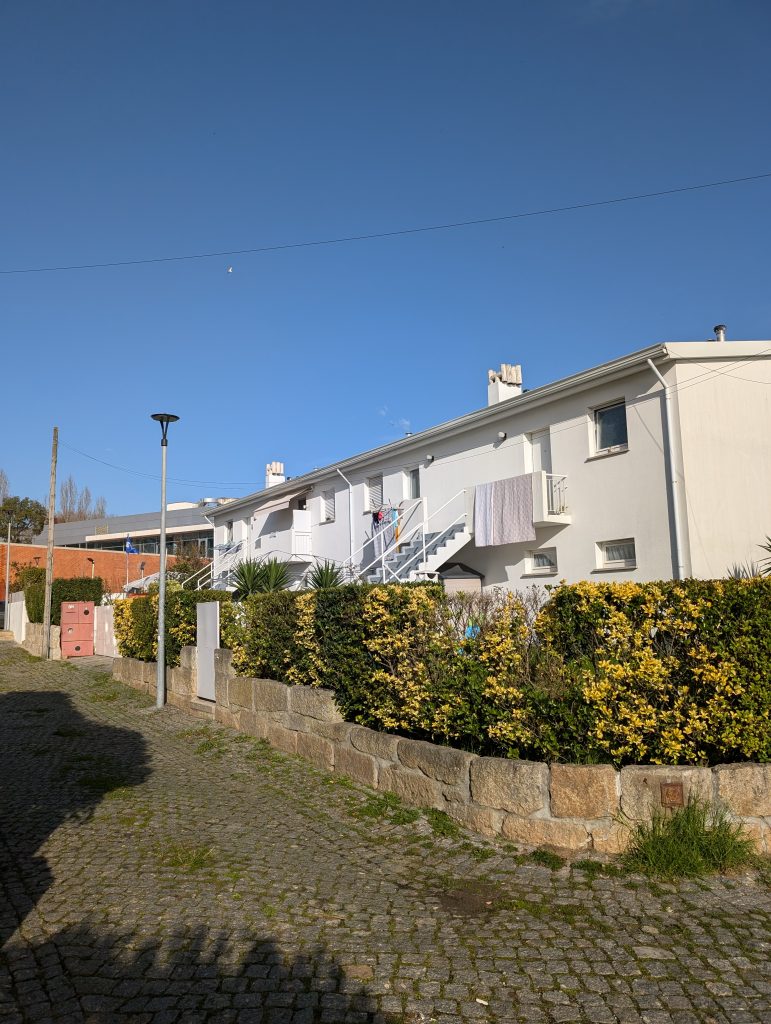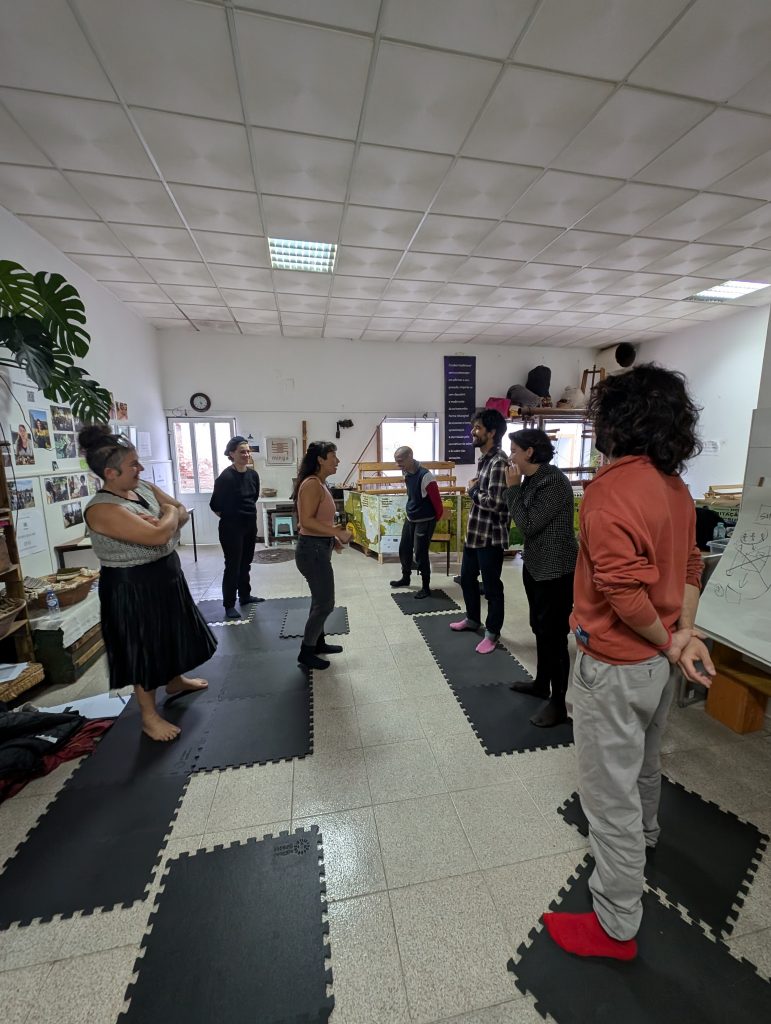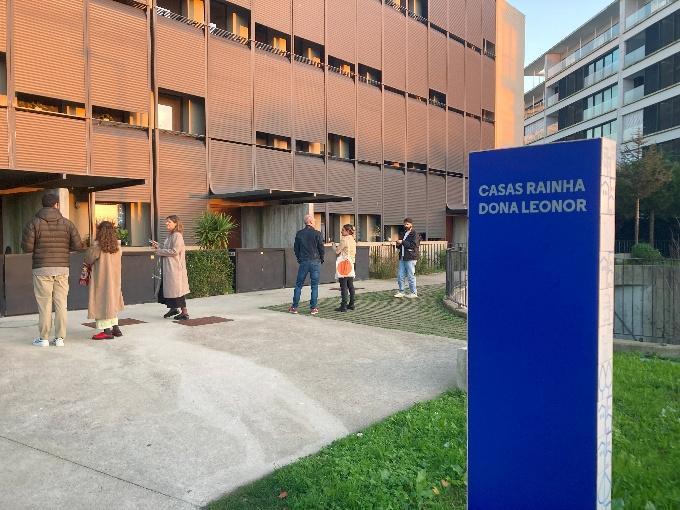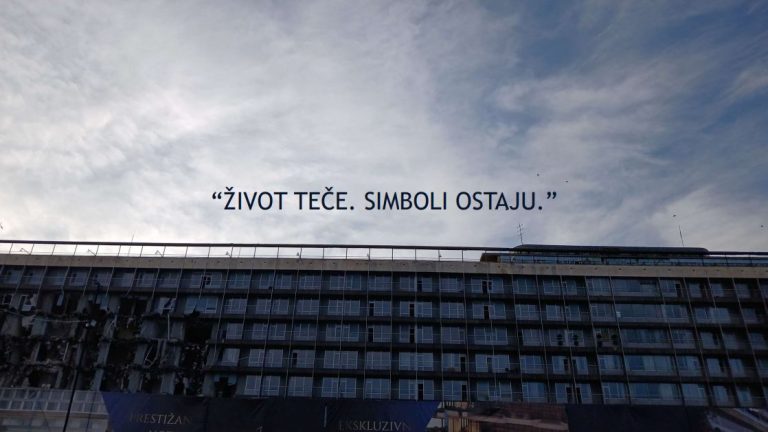By Julia Hartmann
Realising it would be difficult to pair our responsibilities at the municipality and at home with finalising our secondments later this year, we decided to use the relative quiet of the German autumn school break for a short visit to Portugal and pay a quick visit to our new partners at Gaiurb in Vila Nova de Gaia and Domus Social in Porto, as well as our partners in Montemor.
As a lucky coincidence, that meant we could participate in a project meeting and workshop of the Cities 4 co-housing programme at Gaiurb and then take part in several sessions and site visits at the “o futuro do habitaçao” (the future of housing) conference in honour of the Domus Social’s 20 year anniversary at.
At the headquarters of Domus Social, we managed to get a quick impression of the integrated nature of the company’s work. Domus Social was founded 20 years ago as a new municipal-owned company in charge of Porto’s relatively large social housing stock. As an independent managing body, it oversees the planning and regeneration work of the more than 12,000 municipal social housing units in 50 neighbourhoods, processes the applications for housing allowance and re-housing, and looks after its residents with its social workers. This integrated approach made a lot of sense to us, especially when compared to the situation in Tübingen, where the housing support needs of the most vulnerable population are looked after by three different managing bodies, and a common approach is sorely missing.
The high number of social housing units is quite impressive, with roughly 10% of Porto’s population residing in social housing. However, with rising rents and virtually inaccessible free market housing, the waiting lists are long, with up to 1,000 households currently waiting to be re-housed. Lack of municipal building land and sufficient funding has meant that the construction of new housing is not a real option, so recently Domus Social has started to acquire and refurbish existing housing by using the municipality’s pre-emptive rights where possible. Most of the company housing stock, however, consists of (in comparison with our hometown Tübingen) larger estates spread throughout the city, often with their own distinctive urban form and history. Most of the housing stock was built in the 70s and 80s. Over the last 20 years, Domus has been managing the refurbishment of building envelopes and public spaces in quite a number of estates. We were surprised to learn that traditionally, Portuguese housing does not feature any heating systems, so adding sufficient insulation has been an especially important part of refurbishment in order to protect elderly residents from cold winter temperatures and the spiralling heating bills caused by the use of individual electric radiators.
On site visits to several estates, we discussed varied subjects such as the pros and cons of public-private partnerships for social housing construction and the strategies employed to lift “sink estates”. In some estates, renovating facades and creating new public spaces as well as investing in infrastructure such as schools and better public transport has made a difference and helped to decrease stigmatization and change the negative public perception of certain addresses. In another case mentioned in discussion, Domus Social’s goal of creating integrated neighbourhoods and achieving a social mix has proven increasingly difficult, with households refusing to agree to be re-housed on estates deemed dangerous or unsafe. However, this seems to be a relatively unique case, with most estates being well-integrated into the urban fabric and even well-loved by their residents. The most outstanding example we visited in this regard is a block on Duque de Saldanha Street. Built in the late 1930s and modelled on the Karl-Marx estate in Vienna, it features an interior courtyard and arcade access to facilitate communication between its residents. At that time, building social rental housing with communal life in mind amounted to an act of defiance against the Salazar regime, which heavily championed private property and the (Catholic) family unit. It was built to re-house residents of dilapidated courtyard houses – Porto’s famous “Ilhas” of the industrial revolution, built by industrialists and other landlords to house the working poor in mostly cramped and unsanitary conditions. Today, the former re-housing project is still so successful that once housed there, most of the residents live there their whole lives and have retained strong neighbourhood ties. Surprising to us is the practice of re-housing single elderly residents in house shares to combat loneliness and to make up for the shortage of housing units. This strategy seems to work very well in Porto, with residents reporting to be much happier after being re-housed and enjoying each other’s company. From our perspective, this example also shows the success of integrating social work, social housing supply, and management.
The next day, we met our colleagues at Gaiurb, on the other side of the river – a municipal company that not only manages Vila nova de Gaia’s social housing stock but also takes on quite far-reaching municipal responsibilities in the fields of planning and building regulation. Not only did we meet and discuss Vila Nova de Gaia’s unique challenges as an urban region focussed on transit and logistics but we also took part in a meeting of the Cities 4 co-housing project. Cities 4 co-housing is an interesting European partnership that aims to bring forward a model that combines a community land trust with co-housing. We joined the workshop with colleagues from Gaiurb, local experts, and the European project partners from Belgium, discussing possible ways in which the existing Belgian model could be adapted to fit Vila Nova de Gaia’s unique circumstances. We touched on themes relevant to the DASH project as well: the European-wide roll out of successful housing financing and management models hinges on many variables, such as local legislation and funding systems, access to land, and existing management capacities and resources.
After catching an interesting panel on housing financing over in Porto at the “o futuro do habitaçao” conference, we ended the day with some local delicacies. The next day was dedicated to visiting Vila Nova de Gaia’s largest regeneration project Vila d’Este, where many housing units from the seventies had been upgraded and infrastructure added over recent years. We learned about the intricacies of the European funding system for climate measures and the difficulties of adapting a northern European logic of refurbishment and insulation to the Portuguese situation. This also led to a reflection on allowing private owners to capture the value created by public investment, which is what inevitably happened in Vila d’Este after the connection to the subway line and the refurbishment of (mostly) privately owned housing stock.
With house prices and rents rising steeply all over the cities of Porto and Vila Nova de Gaia, it is becoming increasingly difficult to re-house the growing number of people that are being priced out of the market. Much like Domus Social, the social workers of Gaiurb have also taken to housing elderly residents together in larger units, which has proven equally successful in creating more housing capacity and combating loneliness at the same time.
On the weekend we spent a few days in Montemor with our great colleagues from MINGA. On Friday we were meeting for the workshop “let’s talk about money”, moderated by Axel. Many non-profit organizations need borrowed money to realize their ideas and projects. However, most normal banks are very reluctant. Therefore, other sources of money are needed. Experience shows that these are often much easier to find in your immediate environment. Friends, family, and colleagues are often willing to contribute to the success of a project. Talking about money is not easy – this workshop showed how it can be done nonetheless. The workshop contained elements of theater education and practical hints and advice.
Overall, despite the very short time we spent with each of our partners, we got a first impression of the challenges faced locally. First and foremost among these is the incredibly steep rise in land values, house and rental prices, which has been exacerbated over the last few years by overtourism and the influx of European and other foreign nationals. In the central areas, much of the existing housing stock has been renovated for touristic purposes and thus effectively been taken out of the regular housing market. On the other hand, a lot of the housing stock not deemed fit for touristic use is in dire need of upgrading. Both Domus Social and Vila Nova de Gaia have done a terrific job over recent decades in this area. What impressed us the most is the integration of planning, building, management and social care within both companies which, in our view, is a feat still to be achieved in much of our local practice in Germany. Many thanks to our formidable hosts Jose Antonio, Ana, Elsa, Joana, Olga and Sara from Domus social; Carla, Joana and Sofia from Gaiurb; and Filipa, Joana and all the other colleagues from MINGA. We are looking forward to many more fruitful exchanges and discussions over the coming meetings and secondments!






